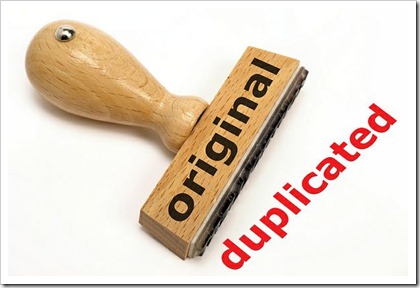Figure this, nearly one-third of all the malaria-fighting drugs in the Southeast Asia region are fake or of bad quality. A perilous state of affairs that foretells the imminent washing out of our decade long fight against the disease. In India alone, it is estimated that the share of counterfeit medicines is as high as INR 4000 crores or 20% of the total Indian market. Counterfeits are not limited to pharmaceuticals alone.
Nearly 10% of all soft drinks in India are counterfeit; between 10% to 30% of the cosmetics, toiletries and packaged food products sold in India are fake; about 74% of the software and 21.5% of cigarettes sold in India are counterfeit.

Counterfeiting is an infringement of the legal rights of an owner of intellectual property (i.e. Trademark) through illegally imitating products to mislead the consumers as to quality and origin of the products. The International Anti Counterfeiting Coalition has estimated that counterfeiting has grown over 10,000% in the past two decades.
The damaging impact of counterfeiting are threefold, foremost is the producers, a majority of which is small and medium enterprises. India has around 6400 industrial clusters, of which nearly 6000 are micro enterprises. Indian SMEs presently lack the capacity to compete with counterfeit products, as a result, they are forced to close down operations and thereby affecting the employment growth.
Secondly, counterfeiting involves a social cost that we as consumers pay. Consumers are the ultimate victims of counterfeiting through excessive prices paid for substandard products that increase exposure to health and safety risks. Sales of consumer goods are expected to grow tenfold, to $100 billion by 2025. The fact that nearly 70% of India is rural, only compounds the problem and demands immediate action.
Lastly, counterfeiting results in a loss of revenue to the government. According to the recently released White paper on Black Money, Counterfeiting at USD 250 billion per year is the second largest in terms of size of illegal markets in the world. In India, for just one sector of auto components, the government loses in excess of Rs 2200 crore per year due to sales of counterfeit auto components. Further, counterfeiting surreptitiously, cascades itself on national security, as gains from counterfeiting feed trade in narcotics, money laundering and terrorism.
Remedial Measures are only piecemeal
To cope with the problem, different mechanisms have been established in different industries, but these stopgap arrangements are not enough. For instance, in the case of FMCG products, Hindustan Unilever, through its market surveillance has helped authorities seize fake goods valued at INR560 million in 2011.
However, these efforts do not result in tangible long-term benefits as small and informal manufacturers that produce these fakes, set up under a different name. Moreover, mom-and-pop stores that sell these products, have an incentive to push fake products as the procurement costs are low and profits are higher.
Efforts to fight counterfeiting are hampered by the fact that there is no concerted campaign to track producers and sellers of such products, which is abetted by lack of Information, and in cases where information is available, by lack of a comprehensive awareness campaign amongst consumers. The problem is further exacerbated by the fact that there is a clear disconnect between the public and the private sector in the approach to this issue.
Tackling the menace – Reaching out to Consumers and Youth
Any effort to tackle counterfeiting requires a collaborative government industry mix. Themes like “Jago Graahak Jago”, the campaign of Department of Consumers Affairs, GoI, and the citizen campaign “Bhagidari” run by the Delhi Government are suitable for a start. The industry can provide real time information on the counterfeits they detect and a means to identify these fake items to the government. The government can then utilize this information and anchor a consistent communication outreach to consumers and citizens through these campaigns.
A recent report revealed that about 31% of counterfeit products are used by the youth in the country; clearly they need to be educated on this issue.
India has nearly 140 million internet users, of which a little less than 65 million are active facebook users. Twitter and Youtube reach out to 14 million users each in a month. India alone generates 31 million Youtube views a month. Hence, the internet provides a major communications medium for any campaign directed at the young.
FICCI CASCADE recently supported a 5 day long Hum Kishore Festival the aim of which was to create awareness among the young on the issue of smuggling and counterfeiting. At a policy level, there is a need for protection and enforcement of Intellectual Property Rights in the country. This requires establishment of specialized authorities for protection and enforcement of Intellectual Property, something that is lacking in the country right now.
![]()
[About the Author – Ms. Meenu Chandra, Joint Director at FICCI currently leads the Committee on Anti-Smuggling and Counterfeiting Activities Destroying Economy (CASCADE) at FICCI. In past, she led the International Commercial and IP practice of a law firm based in New Delhi. She holds a Distinction in her Masters in International Trade from the University of Essex (UK). Her experience includes research and training in International Commercial Law, Company law, IP law as well as other areas of law from UK and Indian Universities. She can be contacted on meenu.chandra@ficci.com. The author wishes to thank Kashifa Hasan for the assistance in the article.]
[img src]
